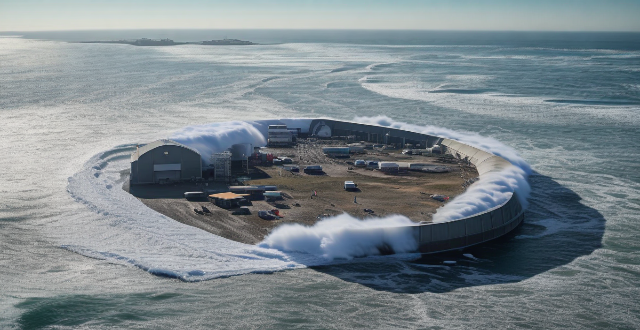Climate refugees are individuals who must relocate due to environmental changes from climate change, such as sea-level rise and extreme weather events. This displacement affects social structures, economies, and cultures, and there is a need for international cooperation and sustainable practices to address the issue. There is currently no specific legal status for climate refugees under international law.

What is a Climate Refugee?
A climate refugee, also known as an environmental migrant or ecological refugee, is a person who has been forced to leave their home due to significant environmental changes caused by climate change. These changes can include sea-level rise, desertification, extreme weather events, and other factors that make it difficult or impossible for people to continue living in their current locations.
Key Points:
1. Definition: Climate refugees are individuals displaced by environmental disruptions linked to global warming.
2. Causes: Rising sea levels, droughts, floods, and other extreme weather phenomena lead to habitat loss.
3. Impact: The relocation of populations affects social structures, economies, and cultures.
4. Solutions: Addressing climate change through international cooperation and sustainable practices is crucial.
5. Legal Status: There is no specific legal status for climate refugees under international law.
List of Environmental Factors Contributing to Displacement:
- Sea-Level Rise: Inundation of coastal areas and low-lying islands.
- Extreme Weather Events: Storms, hurricanes, and tornadoes causing widespread damage.
- Droughts and Water Scarcity: Dried-up rivers and lakes, reduced agricultural yields.
- Wildfires: Destruction of habitats and air quality issues.
- Loss of Biodiversity: Ecosystem collapse affecting food sources and natural resources.
Examples of Impacts on Communities:
- Social Disruption: Breakdown of community structures and relationships.
- Economic Strain: Job loss in industries dependent on a stable climate, such as farming and fishing.
- Cultural Loss: Traditions and ways of life tied to specific environments may be lost.
Possible Solutions and Mitigation Efforts:
- International Agreements: Such as the Paris Agreement, aim to limit global temperature rise.
- Sustainable Development: Promoting green energy and reducing carbon emissions.
- Adaptation Measures: Building resilience in vulnerable communities through infrastructure improvements and resource management.
- Humanitarian Aid: Providing support for those already displaced by climate change.
- Legal Recognition: Working towards a formal recognition of climate refugees under international law.
In conclusion, the issue of climate refugees highlights the urgent need for comprehensive action to combat climate change before more people are forced from their homes due to environmental catastrophes.